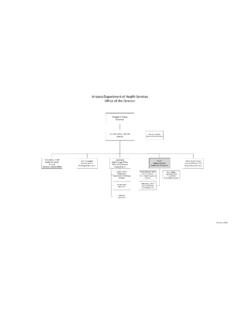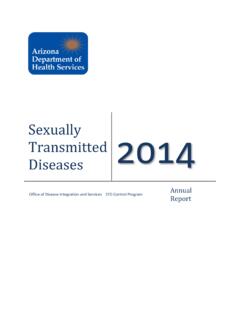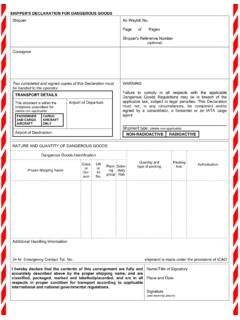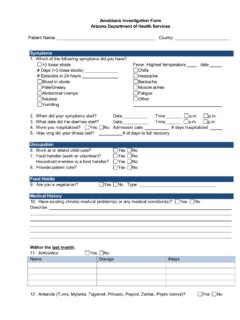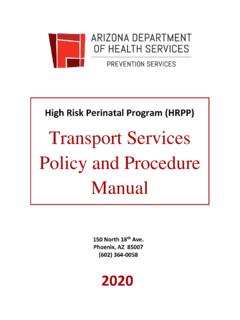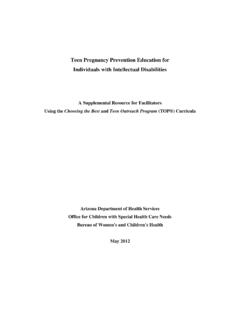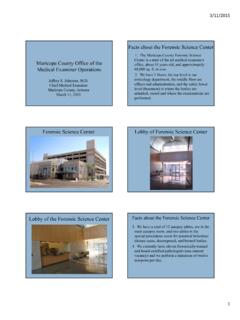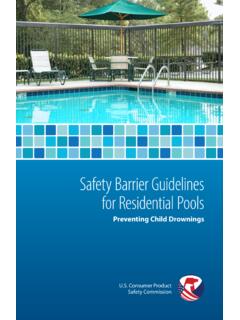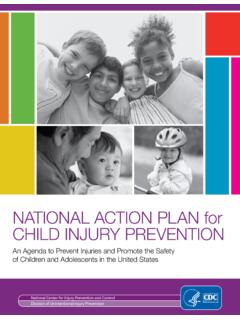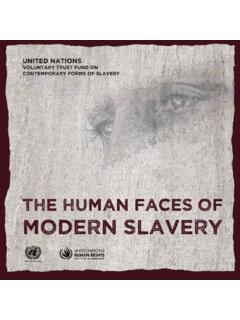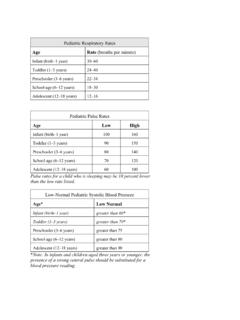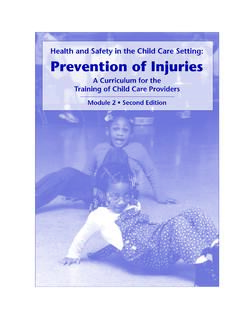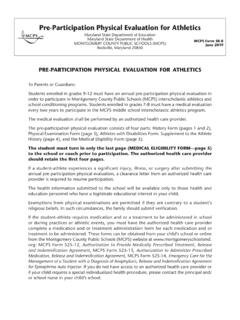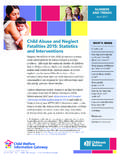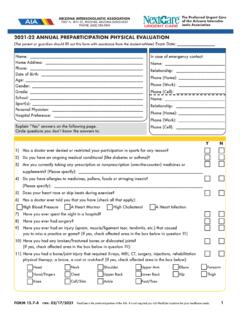Transcription of Twenty-Eighth Annual Report
1 Arizona child Fatality Review Program | Twenty-Eighth Annual Report . Twenty-Eighth Annual Report November 15, 2021. Mission: To reduce preventable child fatalities in Arizona through a systematic, multi- disciplinary, multi-agency, and multi-modality review process. Prevention strategies, interdisciplinary training, community-based education, and data-driven recommendations are derived from this Report to aid legislation and public policy. Arizona child Fatality Review Program | Twenty-Eighth Annual Report . Letter from the Chair of the Arizona State CFR Team The Arizona child Fatality Review (CFR) Program's goal is to reduce child deaths in Arizona by conducting a comprehensive review of all child deaths to determine what steps could have been taken, if any, to prevent each child 's death.
2 In 2020, 838 children died in Arizona, an increase from the 777 deaths in 2019. The leading causes of death were prematurity, congenital anomalies, motor vehicle crashes, poisonings, and firearm injuries. Prematurity was the most common cause of death for neonates (infants less than 28 days old) while suffocation was the common cause of death among infants 28 days to less than 1 year of age. The accidental injury death rate increased 31% from 2019 to 2020. The three most common causes of accidental death were motor vehicle crashes, poisoning, and suffocation. A child protective services history with the family, substance use and poverty were the most common risk factors for accidental deaths.
3 The motor vehicle crash death rate increased 54% and the firearm injury mortality rate increased 41%. The most common risk factor contributing to a firearm injury death was access to firearms, with 86% of firearm injury deaths involving a handgun, and the child 's parent as the owner accounted for 25% of the firearm injury deaths. There was a 30% increase in the suicide rate from 2019 to 2020. Risk factors for suicide deaths included access to firearms, history of maltreatment and child mental health disorder. The substance use related death rate increased 32% from 2019 to 2020, and the most used substances contributing to a child 's death were opiates and marijuana.
4 The CFR teams determined that 47% (396) of the 2020 deaths could have been prevented. Motor vehicle crashes, poisonings, firearm injuries and suffocation were the four most common causes of preventable deaths. Most of the Sudden Unexpected Infant Deaths (SUIDs) were due to suffocation and unsafe sleep environments. Unsafe sleep environment was a factor in 100% of these deaths while objects in sleep environment was a factor in 92% of SUIDs. There was a 5% decrease in abuse/neglect deaths from 2019 to 2020. Of the ninety-five children who died from abuse/neglect, 66% of the children had prior involvement with a CPS. agency, and in 11% of these deaths, the families had an open case at the time of the child 's death.
5 Prevention efforts are more likely to be effective if our recommendations are targeted to the children at greatest risk. While Black/African American children comprise only 6% of Arizona children, they comprised 13% of all child deaths and 16% of all infant deaths. Furthermore, American Indian/Native Alaskan children comprise only 5% of Arizona children, but they make up 10% of all child deaths and 8% of all infant deaths in Arizona in 2020. The underlying causes of these disparities needs to be addressed to decrease these deaths. Due to the COVID-19 pandemic this Report includes COVID-19 related child deaths where COVID-19 was the direct or indirect cause of death or if COVID-19 contributed to a child 's death.
6 The direct COVID-19 mortality rate in Arizona was deaths per 100,000 children while the national direct COVID-19 mortality rate was deaths per 100,000 children. Fifty- eight percent of direct COVID-19 deaths occurred in children less than 12 years old and fifty percent of the direct COVID-19 deaths were children living in a rural region. The most common 1. Arizona child Fatality Review Program | Twenty-Eighth Annual Report . risk factor for direct COVID-19 deaths was poverty (58%). The fatality review team recognizes that COVID-19 likely is indirectly related to other child deaths and may have been a factor in the increases of child deaths due to suicide, firearm injuries and motor vehicle crashes included in this Report .
7 Despite the COVID pandemic, our volunteers continued to meet virtually throughout the past year in order complete this Annual Report . I would like to thank all our volunteers as well as the Arizona Department of Health Services and the Arizona Chapter of the American Academy of Pediatrics for their support of the CFR program and its mission to prevent child deaths in Arizona. Sincerely, Mary Ellen Rimsza, MD FAAP. Chair, Arizona child Fatality State Team 2. Arizona child Fatality Review Program | Twenty-Eighth Annual Report . Submitted to: The Honorable Douglas A. Ducey, Governor, State of Arizona The Honorable Karen Fann, President, Arizona State Senate The Honorable Russell Bowers, Speaker, Arizona State House of Representatives This Report is provided as required by 36-3501.
8 Prepared by: Arizona Department of Health Services Office of Assessment and Evaluation Jessica Perfette, MPH, child Fatality Review Program Manager Alexis Griffin, Infant and child Health Epidemiologist Teresa Garlington, Administrative Assistant II. Aline Indatwa, PhD, Epidemiology Program Manager Mart n F. Celaya, MPH, Chief of the Office of Assessment and Evaluation Acknowledge to Reviewers: Patricia Tarango, MS, Chief of the Bureau of Women's and Children's Health Sheila Sjolander, MSW, Assistant Director Public Health Division-Prevention Services Acknowledgments: Susan Newberry, Retired Maricopa County CFR Coordinator, who retired at the start of the 2020 child fatality reviews but volunteers countless hours offering support and quality assurance to the program.
9 Her passion and hard work for the CFR program does not go unnoticed and she is a valuable resource for the program's success. The ten local CFR teams and their coordinators in Arizona, whose persistent efforts, conducted 100% of child fatality reviews to aid in prevention recommendations. Because of their hard work and dedication to the program, over the last 28 years the CFR program has overall continued to decrease preventable deaths for our Arizona children. _____. This publication can be made available in alternative formats. Contact the CFR Program at (602) 364- 1400 (voice) or call 1-800-367-8939 (TDD). Permission to quote from or reproduce materials from this publication is granted when acknowledgment is made.
10 This publication was supported by a Cooperative Agreement Number: 1 NU38DP000001-02-00. funded by the Centers for Disease Control and Prevention. Its contents are solely the responsibility of the authors and do not necessarily represent official views of the Centers for Disease Control and Prevention or the Department of Health and Human Services. 3. Arizona child Fatality Review Program | Twenty-Eighth Annual Report . Table of Contents Letter from the Chair of the Arizona State CFR Team .. 1. Submitted to: .. 3. Prepared by: .. 3. Acknowledgments: .. 3. Disclaimers and Changes to the Arizona child Fatality Review 6. Disclaimers.
